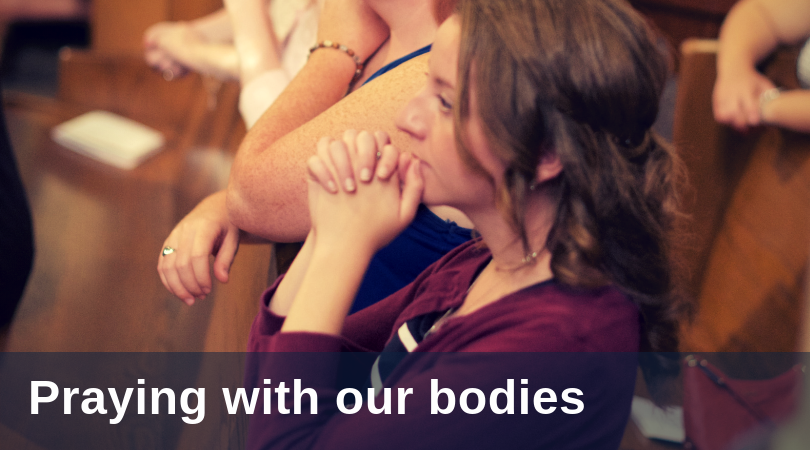
A very close friend of mine has objected to the Catholic Mass in these (closely paraphrased) terms: I really don’t understand all the movement during the Mass. I think it’s unnecessary. You walk in and kneel, and then you sit, and then you stand, and then you sit—up and down, up and down, up and down!
It’s understandable why someone might think that, but there is very good reason for all the movement: The human body expresses truth, and what we do with our body affects our soul.
The body expresses truth
Consider the use of our bodies in everyday situations. We hug and kiss those we love, we pump our fist in the air when we’re very excited and sometimes we curl up in bed at the end of a long, exhausting day. Our body is a vehicle of truth; this much is obvious. It’s also no less the case when we worship the Triune, everliving God of the living at Mass.
We stand during the opening prayers and for the proclamation of the Gospel, in recognition of the importance of what we are doing (i.e. praying for the forgiveness of sins, professing our faith and hearing the Gospel). We sit when we hear the reading(s) and the homily, a posture of reception to sacred Scripture and the accompanying moral instruction in the homily. We bow our heads during the recitation of the Nicene Creed at the words et incarnatus est (“by the power of the Holy Spirit . . . became man”) to honor the Son of God’s Incarnation. We kneel during the consecration—an acknowledgement of the momentousness of what we are privileged to witness, namely, the in-breaking of Heaven on Earth, when Christ shares his very Self with us, so that we might be with him in the most intimate way possible this side of death. Blessed are those called to the supper of the Lamb, indeed!
The body as an aid to the soul
Keeping God as the center of our lives is a constant struggle. We often fail. That is why we need habits and rituals; they are aids on our spiritual journey. Rote prayers said before and after meals, the Sign of the Cross, the Rosary, the Mass—they are each deceptively simple activities that first direct our bodies to God so that, with the appropriate spiritual disposition, we can direct our souls to God.
During both communal and personal prayer, we can also make conscious choices about what we do with our bodies. We might choose to kneel when we pray at home or be more deliberate about our posture at Mass. We might take up a fast and offer it for a particular intention. We might start doing a corporal work of mercy once a month. There are innumerable ways for our body to help us orient ourselves to God.
This Lent is as good a time as any to practice this (and perhaps relearn it) in preparation for when the Lord will call us forth from the desert at Easter.


